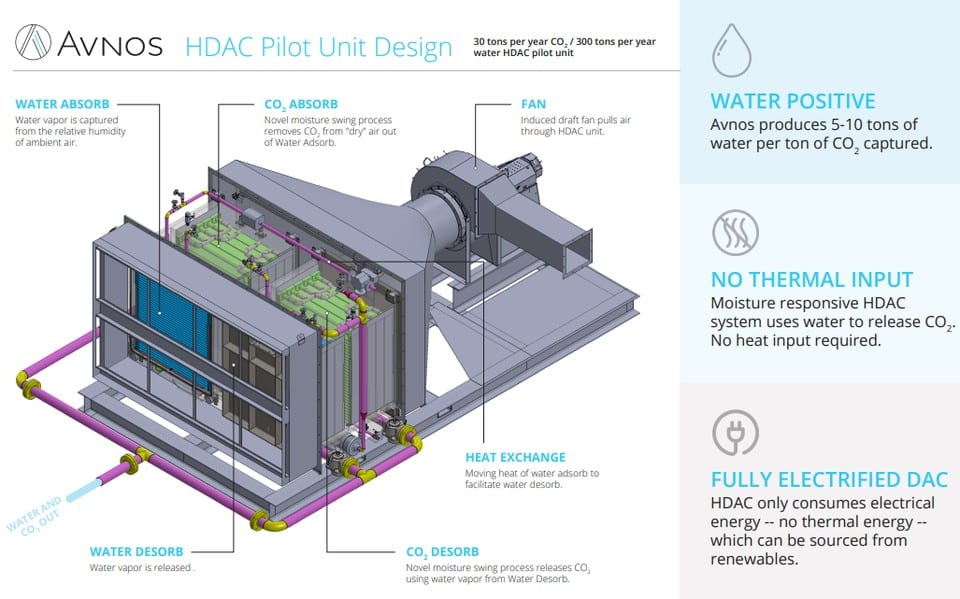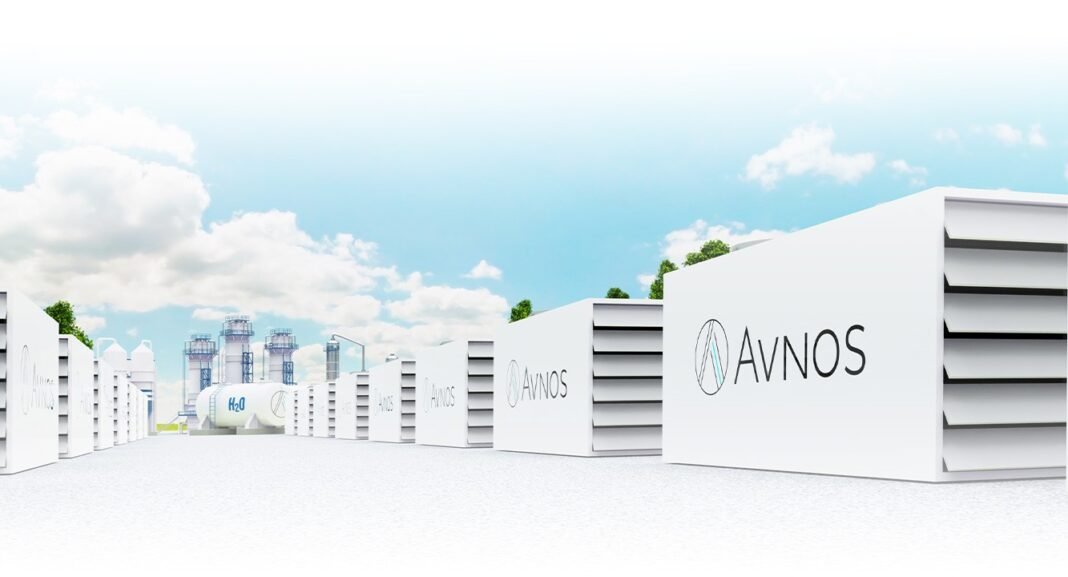L.A.-based carbon capture startup Avnos signed strategic investment deals worth over $80 million with big oil companies, Shell and ConocoPhillips, and JetBlue to ramp up commercialization of its novel Hybrid Direct Air Capture (HDAC) technology.
Founded in 2020, Avnos focuses on developing and deploying scalable, flexible, and cost-effective technology in the DAC market.
The company has been awarded multi-million-dollar projects from the U.S. Department of Energy to demonstrate its HDAC solution. It also got awards from the U.S. Office of Naval Research to pilot carbon capture and e-fuel production.
Avnos’ Hybrid DAC Technology is a “Twofer”
Global greenhouse gas emissions hit record high in 2021 and projection shows the figures will continue to increase without rapid climate actions done. This year’s record-breaking wildfires, storms, floods, and heat events are the proofs.
To prevent those disasters from getting worse, reducing carbon emissions and removing what’s already in the air are critical. Climate experts highlighted the need for billions of tons of annual CO2 removal (CDR) capacity to significantly reduce emissions.
That gave rise to the birth of different startups with the aim to remove carbon dioxide. Popular existing DAC companies include Climeworks, Global Thermostat, Charm Industrial, and Equatic among others. They’re taking different approaches to directly removing CO2 from the air and water.
But what Avnos is offering to the market is unique and innovative: capturing carbon and producing water anywhere there’s air.

In a sense, it’s addressing global warming and water scarcity. Plus, it doesn’t use heat as an input but employs a moisture swing adsorbent instead, which significantly lowers energy consumption.
In comparison, existing DAC approaches consume large quantities of water while Avnos HDAC produces water. The water byproduct is then used to drive the company’s carbon capture operations.
According to the startup, its HDAC performs best in four major areas versus other DAC systems in place. These include total energy use, thermal energy use, water consumption/production, and costs. The video shows how Avnos hybrid direct air capture technology works.
Last week, a similar carbon capture technology by another California-based startup, Capture6, secured a grant of over $8 million from the California Energy Commission. The company also produces freshwater in removing carbon but uses brine, a byproduct of water treatment facilities, to produce a solvent that captures CO2.
Removing Carbon and Selling Credits
Avnos HDAC system uses modules about the size of a 20-foot shipping container. It pulls in air and runs it in a series of filters and condensed water is then collected, pumped out, and stored. The captured carbon goes into the storage tank.
The company said there’s a 5-to-1 ratio of water produced for each ton of captured CO2. This water may create more revenue streams for Avnos while the big oil backers can convert the CO2 into e-fuels.
The $80+ million investment is a huge bet on engineered or technological solutions for mitigating climate change.
ConocoPhillips finds Avnos carbon capture technology a promising solution that “reduces carbon emissions crucial to enable an orderly energy transition”.
What captures Shell Ventures’ interest is the “potential of Avnos’ technology to reduce energy demand in capturing CO2”. JetBlue believes that the HDAC system plays an important role in e-fuels production.
Remarking on their strategic partnerships, Will Kain, CEO of Avnos, said:
“Adding blue-chip strategic partners such as ConocoPhillips, JetBlue Ventures, and Shell provides us with an incredible opportunity to access more resources, know-how, and global reach to meaningfully accelerate our deployment schedule. Ultimately, we will be able to remove more atmospheric carbon, faster, and at lower costs than we would have been able to on our own.”
The amount of carbon removed by Avnos generates corresponding carbon credits that it can use to offset its own emissions. Each credit equals one tonne of carbon removal. Or the startup can turn it into an income source by selling them to other companies looking for carbon offsets.
A pilot version of the Avnos HDAC facility will open later this year in Bakersfield, California. It can remove 30 tons of CO2 a year and produce 150 tons of water.
A bigger, commercial-grade system can increase this capacity by 100x – 300 tons of carbon and 1,500 tons of water. The modules are stackable to increase the capacity even more but would need larger renewable power installations.
Avnos will use the funding to supply commercial-ready HDAC systems by the end of 2025.

